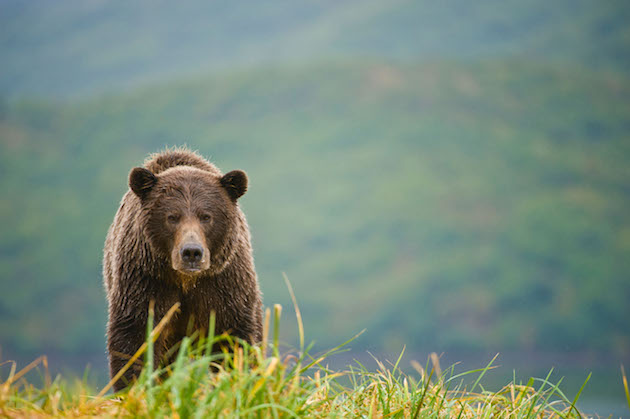When are bears more likely to attack hunters?
Alasdair Mitchell shares some warning stories

Fatal bear attacks are mercifully a rare occurrence, even in the US, but high-profile deaths in recent years underline the dangers for hunters.
Sometimes, imagination is all you need. It can clothe the terse words of an official report to convey a sense of the utter desperation of a situation. Take, for example, the following account of an incident that occurred in Wyoming, US, last year (I have changed the names).
Attacked whilst dealing with carcass
“Johnson, a guide for Elk Canyon Outfitters, was cleaning an elk that he and his client Brian Smith had shot when the bear attacked. The bear was a sow with a one-and-a-half-year-old male cub. The hunter and his guide were dressing the elk carcass and had left a canister of bear spray and a Glock 20 pistol out of reach. As the bear attacked, Smith, unfamiliar with the operation of a Glock pistol, was unable to fire and attempted to throw it at Johnson who failed to catch it. The bear turned on Johnson. Smith fled with injuries as the bear attacked Johnson. After staggering 50 yards uphill from the dead elk, Johnson was killed by the mother and possibly by the cub as well. The bears were shot and killed by Wyoming Fish and Game officials.”
Fatal bear attacks rare
US wildlife officials point out that fatal bear attacks are statistically rare, numbering only two to five incidents in North America most years. But there are many more non-fatal attacks, some of which leave their victims maimed for life. A high proportion of these attacks are on hunters. This may be because hunters are not only out and about in bear country, but are particularly vulnerable when dealing with a carcass or carrying game meat.
Attacks by brown and polar bears are the most likely to be fatal. This may be a consequence of the sheer size of these animals, which can weigh more than 1,000lb. Most bear species are omnivorous, but the polar bear is strictly carnivorous. In Canada, Inuit hunters with permits for polar bears travel in huge circles on the ice with their dog teams. The idea is that the polar bears pick up the scent and close in on the hunters.
By contrast, black bears are usually non-aggressive and smaller, but very agile. They are adept a climbing trees, just in case you think that might be a safe refuge. The number of black bears in North America has surged and could now be as many as 800,000, meaning that close encounters with people are inevitable. Most end with the bear retreating, but a black bear killed a man in Ontario, Canada, only last month.
Perhaps the best-known bear-related tragedy of recent years involved the so-called ‘bear whisperer’ Timothy Treadwell. He was an animal rights campaigner who filmed his exploits with bears in Alaska over a period of 13 years. He disparaged wildlife biologists, hunters and the national park service. He talked on film about the danger, but seemed to think he had developed a special relationship with the great bruins.
Finally, in October 2003, a bear repaid the favour by eating Mr Treadwell and his girlfriend. The attack came to light after a floatplane pilot flew over their wrecked campsite and noticed a bear feeding on a rib cage. Mr Treadwell’s video camera was later retrieved. It still had its lens cap on, but the voice-activated microphone had recorded the final six minutes of the horrific ordeal.








